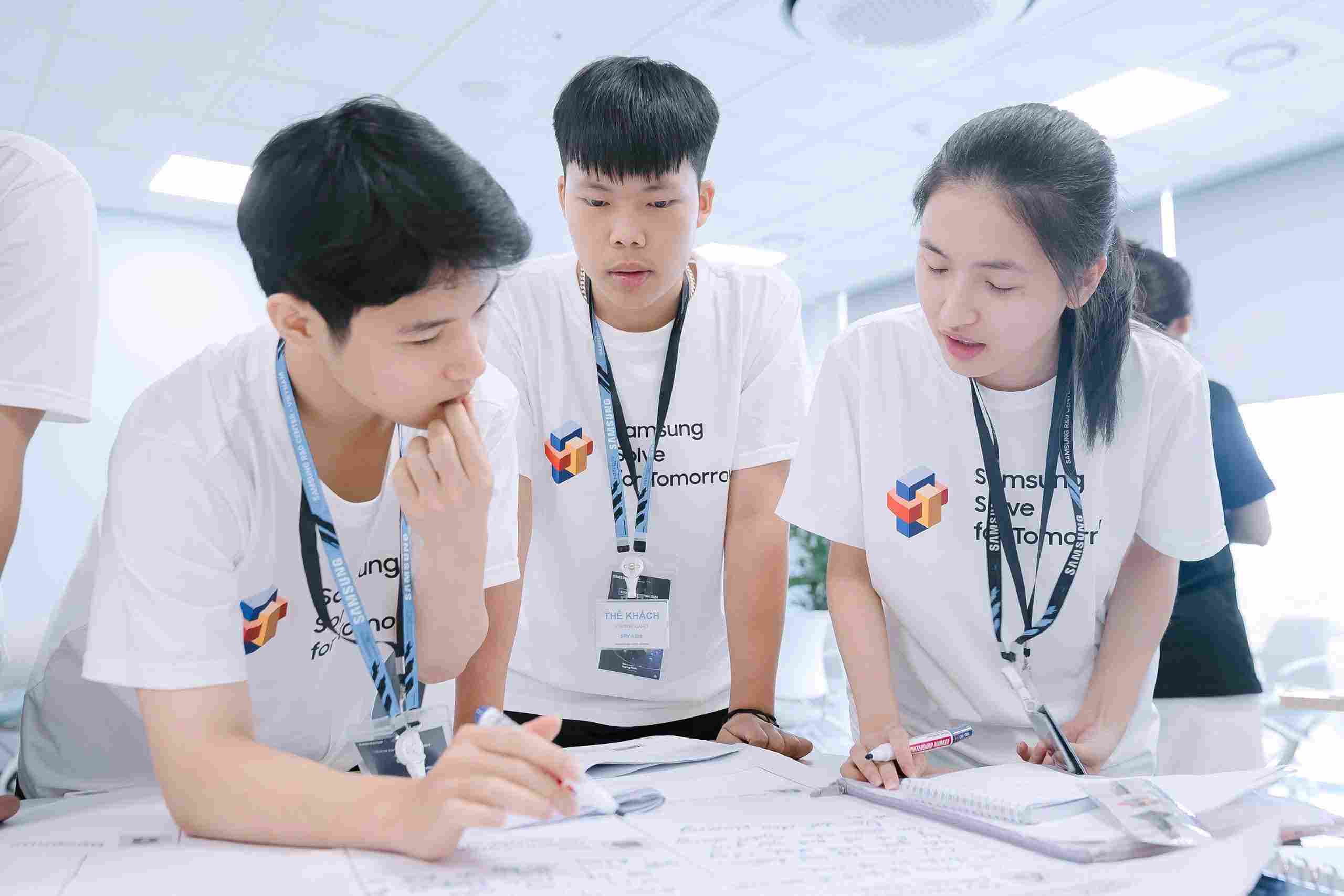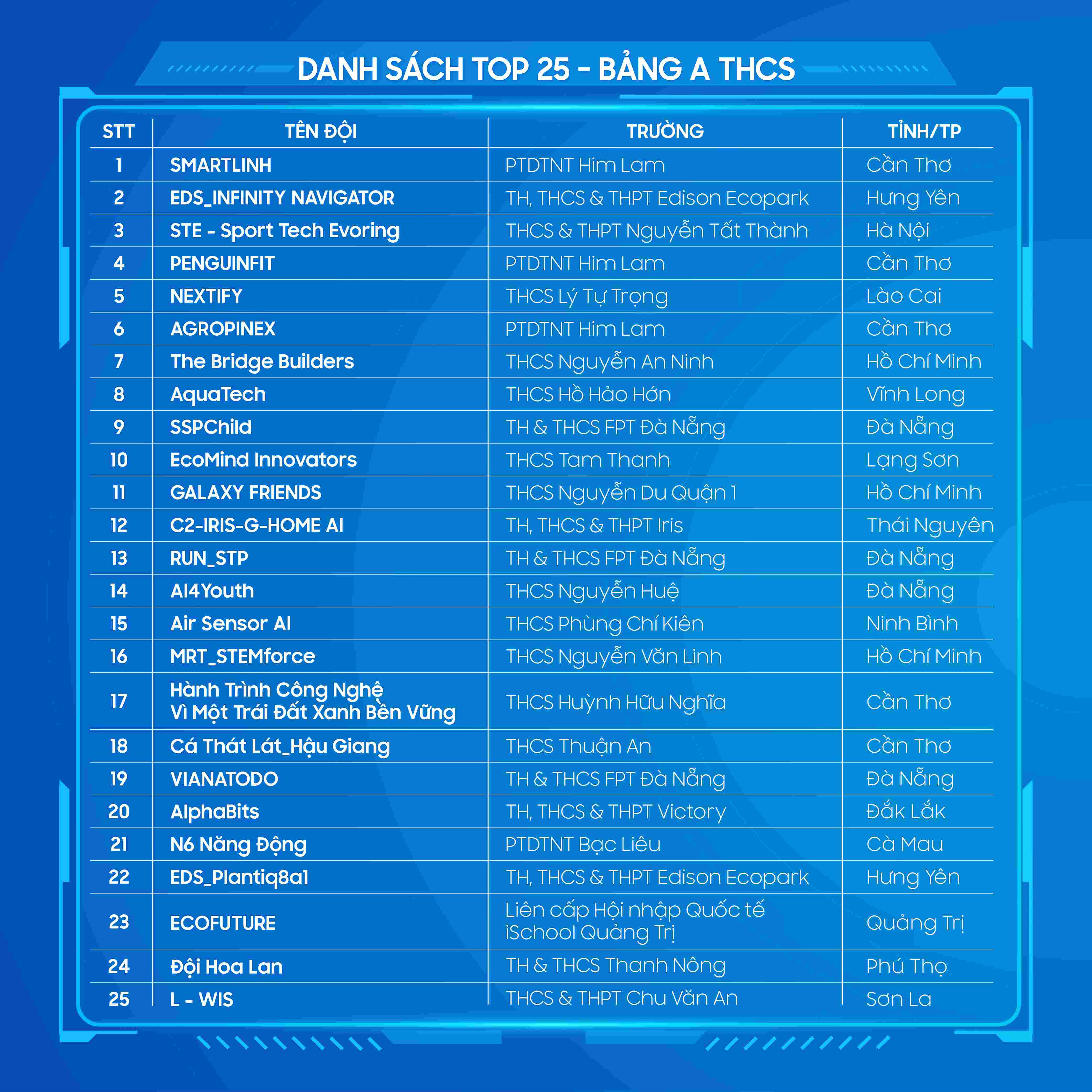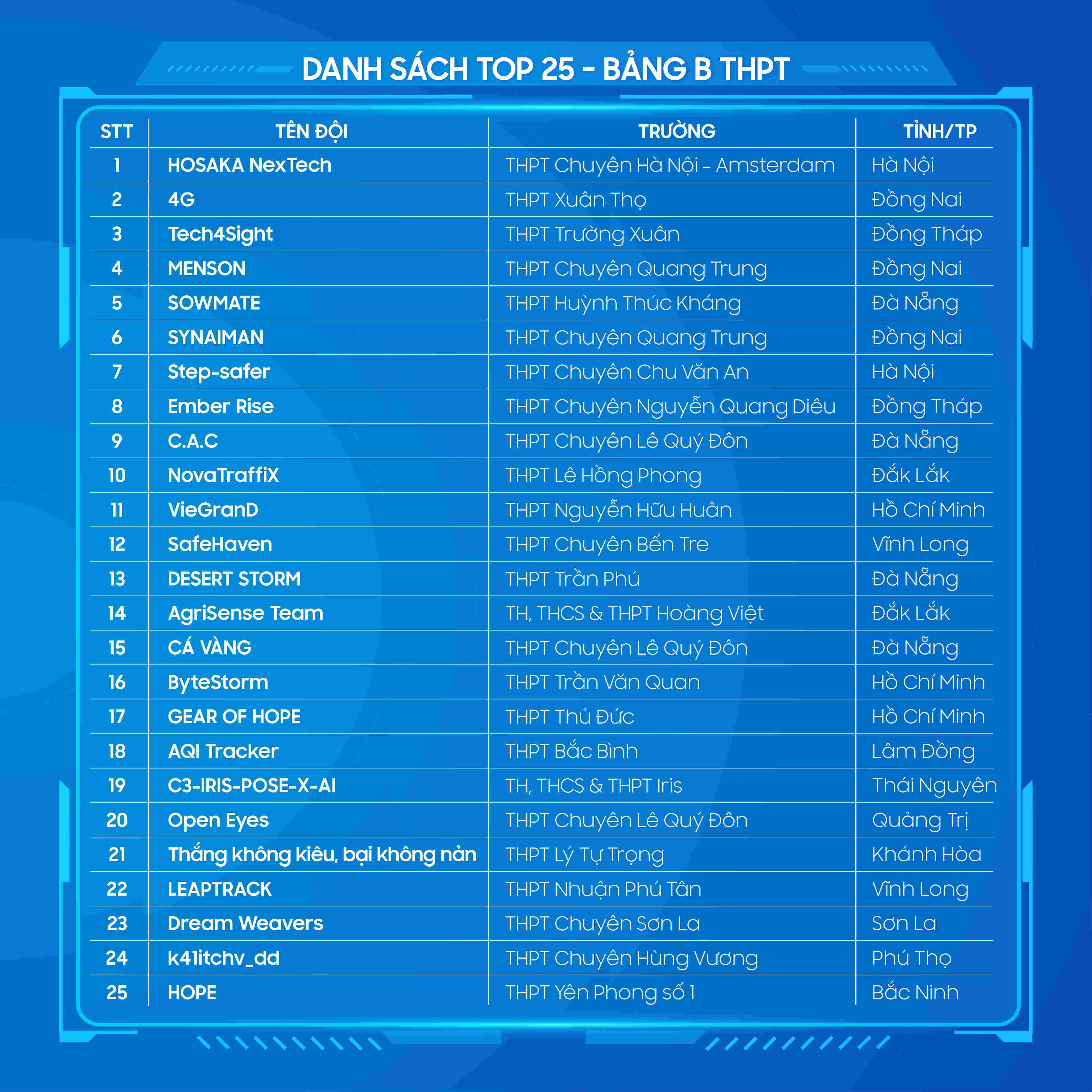From 2,625 entries, the Top 50 outstanding projects have been selected by Samsung to advance to the Product development round of the Samsung Solve for Tomorrow 2025 competition.
Officially launched in March 2025, after more than three months of implementation, the Preliminary Round of Solve for Tomorrow 2025 concluded with 2,625 submissions from secondary and high schools across the country, the largest number of entries in the competition’s history. Among them, the 50 most outstanding technological solutions were chosen to proceed to the next stage, the Product development round. According to the results, the 50 teams come from various provinces nationwide, including 15 from the North, 15 from the Central region, and 20 from the South.

The selected projects cover a wide range of topics, from devices that improve daily life, environmental protection solutions, and innovations in healthcare and education, to initiatives that support disadvantaged groups and local production activities. Many ideas also focus on personalizing exercise experiences, enhancing performance, and ensuring safety, thereby contributing to building a healthier community.
Notably, 21 out of the 50 ideas in the second round were created to address social issues, demonstrating the young generation’s deep concern for this matter.
“The submissions this year showed significant growth in quality compared to the previous year, especially in Group B (high school). The teams presented highly practical and feasible ideas, applying multiple fields of technology and complex technical tools in their solutions,” said Dr. Phung Cong Phi Khanh, Head of the Department of Electrical and Electronic Technology, Faculty of Technical Education, Hanoi National University of Education, and a representative of the judging panel.
“In addition, the academic depth of the submissions was a strong impression this year. The entries were well-structured, with presentation, interpretation, and topic approaches meeting the standards of a technology research project. These elements have grown remarkably compared to last year. Notably, the skill gap between regions has narrowed considerably, and many new faces with high-quality ideas and solutions have emerged,” Dr. Khanh added.

Also praising the quality of the entries, MSc. Dang Ngoc Truong, Faculty of Technical Education, Hanoi National University of Education, another member of the judging panel shared: “The submissions were all practical, with many drawing on unique materials from daily life, society, and production. They were highly persuasive and could be further developed with more time and investment.”
The Top 50 teams of Solve for Tomorrow 2025 will continue to develop their ideas from paper into product models under the guidance of technology experts. The models’ functions may change depending on real-world conditions but must remain consistent with the solutions evaluated in the Preliminary Round. This round provides teams with the opportunity to demonstrate their talents while reassessing the feasibility and effectiveness of their proposed solutions, making suitable adjustments along the way.

At the end of Round 2, the organizers will select 16 teams to advance to the Finals, scheduled to take place in late October 2025..
“Samsung Solve for Tomorrow creates a space for young people, who dream of a brighter future, to propose ideas and solutions through STEM education. I hope that students across Vietnam will grow into key talents for the nation, fully equipped with STEM knowledge and excellent problem-solving skills,” said Mr. Na Ki Hong, President of Samsung Vietnam.
The Samsung Solve for Tomorrow competition was initiated globally by Samsung in 2010 in the United States to provide students with opportunities to apply STEM education in science, technology, engineering, and mathematics. The goal is to nurture technological capabilities and creative solutions to address local and social issues. In Vietnam, the competition was first organized in 2019 and has since become an annual creative playground for secondary and high school students aged 12 to 18.









